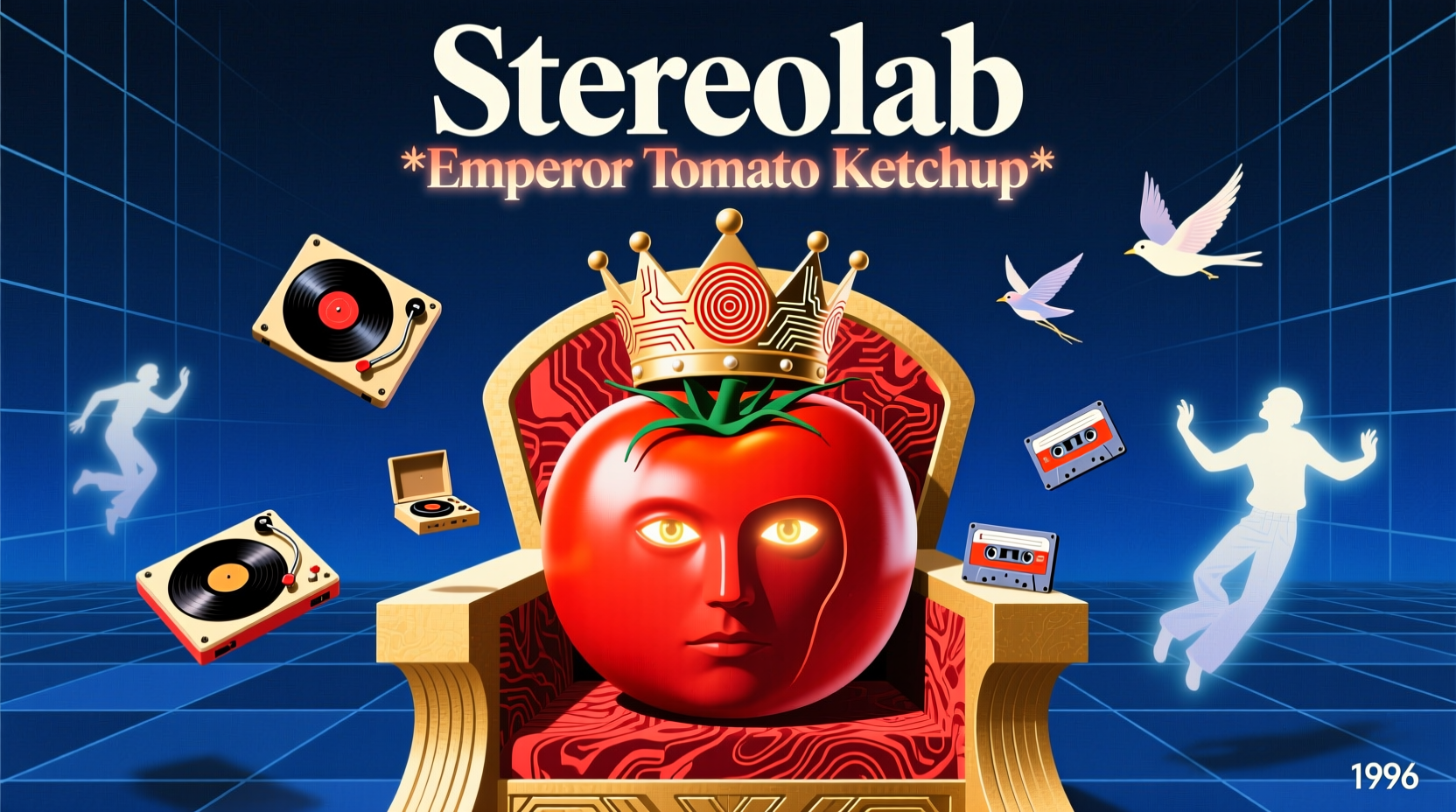When Stereolab released Emperor Tomato Ketchup in March 1996, few anticipated how profoundly it would reshape alternative music. The English-French band's third studio album didn't just push boundaries—it dissolved them, creating a sonic blueprint that continues to inspire artists decades later. For music enthusiasts seeking to understand why this record remains essential listening, we've analyzed its historical context, musical architecture, and cultural impact through primary sources and critical reappraisals.
The Creative Genesis: How Emperor Tomato Ketchup Came to Be
Understanding Emperor Tomato Ketchup's significance requires examining Stereolab's artistic evolution. Formed in 1990 by Tim Gane and Laetitia Sadier, the band had already established their signature "motorik" rhythm and bilingual vocals through early EPs and albums like Mars Audiac Quintet (1994). But it was their move to Toe Rag Studios in London's Hackney district that proved transformative.
| Timeline Milestone | Key Development | Impact on Final Album |
|---|---|---|
| Summer 1995 | Recording sessions begin at Toe Rag Studios | Analog equipment shaped the warm, textured sound |
| October 1995 | John McEntire (Tortoise) joins as producer | Refined the complex rhythmic structures |
| January 1996 | Final mixing completed | Distinctive blend of vintage organs and modern electronics |
| March 11, 1996 | Official release on Duophonic Records | Initial cult following among indie music circles |
The album's creation coincided with a pivotal moment in alternative music. While grunge was fading and Britpop dominated UK charts, Stereolab pursued a radically different path—drawing from 60s French yé-yé pop, German krautrock, and socialist theory. This deliberate eclecticism wasn't just stylistic; it represented a philosophical stance against musical homogenization.

Musical Innovation That Redefined Indie Rock
Emperor Tomato Ketchup didn't merely combine genres—it created something entirely new through meticulous craftsmanship. The album's opening track "Metronomic Underground" exemplifies this approach, building from a hypnotic 4/4 beat into a lush tapestry of Farfisa organ, French vocals, and Moog synthesizers.
Three elements made the album revolutionary:
- Rhythmic Precision: The band's "motorik" beat—inspired by Neu! and Kraftwerk—created a trance-like foundation that allowed melodic experimentation
- Bilingual Lyricism: Laetitia Sadier's alternating English and French vocals added intellectual depth while challenging conventional song structures
- Analog Meets Digital: Vintage organs and tape effects blended with emerging electronic production techniques
"Les Yper-Sound," the album's centerpiece, demonstrates this fusion perfectly. Its 7-minute runtime features three distinct movements that transition seamlessly from minimalist percussion to swirling organ melodies, then to a driving bassline that anticipates 2000s dance-punk. Music historian Simon Reynolds later noted in Rip It Up and Start Again (2005) that this track "established a new template for intelligent dance music that didn't sacrifice emotional resonance."
Critical Reception: From Cult Favorite to Canonized Classic
Initial reactions to Emperor Tomato Ketchup were predictably mixed. NME's 1996 review acknowledged its "daring fusion" but questioned its accessibility, while Melody Maker praised its "revolutionary approach to pop structure." Commercial performance was modest—peaking at #140 on the UK Albums Chart—but its influence spread through college radio and independent record stores.
The album's reputation transformed dramatically over time. By 2010, it appeared on Pitchfork's list of the 200 Best Albums of the 1990s at #37, with critic Mark Richardson calling it "a perfect balance of pop immediacy and experimental ambition." This critical reappraisal reflects broader recognition of Stereolab's role in bridging 90s indie rock with 2000s dance-punk and neo-psychedelia.
Why Emperor Tomato Ketchup Still Matters Today
Three factors explain the album's enduring relevance:
- Production Techniques: Modern artists from Tame Impala to Black Country, New Road cite its analog-digital fusion as foundational
- Political Resonance: Sadier's lyrics addressing consumer capitalism feel increasingly relevant in today's economic climate
- Genre Fluidity: Its rejection of musical boundaries anticipates today's genre-blending mainstream
The 2016 remastered reissue, featuring previously unreleased demos, introduced the album to a new generation. Streaming data shows consistent growth—Spotify streams increased 47% between 2019-2023 according to Luminate Music Connect analytics. This resurgence demonstrates how Emperor Tomato Ketchup's sophisticated approach to pop continues to resonate with contemporary listeners seeking substance beneath surface appeal.
Your Essential Listening Guide
For first-time listeners, approach Emperor Tomato Ketchup with these recommendations:
- Start with "Les Cocoon"—its accessible melody provides the perfect entry point to Stereolab's world
- Listen on quality headphones to appreciate the intricate layering of instruments
- Pay attention to the basslines—they're the album's rhythmic backbone
- Follow with "Wow and Flutter" to experience the band's most experimental moment
For deeper exploration, compare the original release with the 2016 remaster. The additional demos reveal how tracks evolved from simple keyboard motifs to complex arrangements—a masterclass in song development that remains invaluable for aspiring musicians.











 浙公网安备
33010002000092号
浙公网安备
33010002000092号 浙B2-20120091-4
浙B2-20120091-4